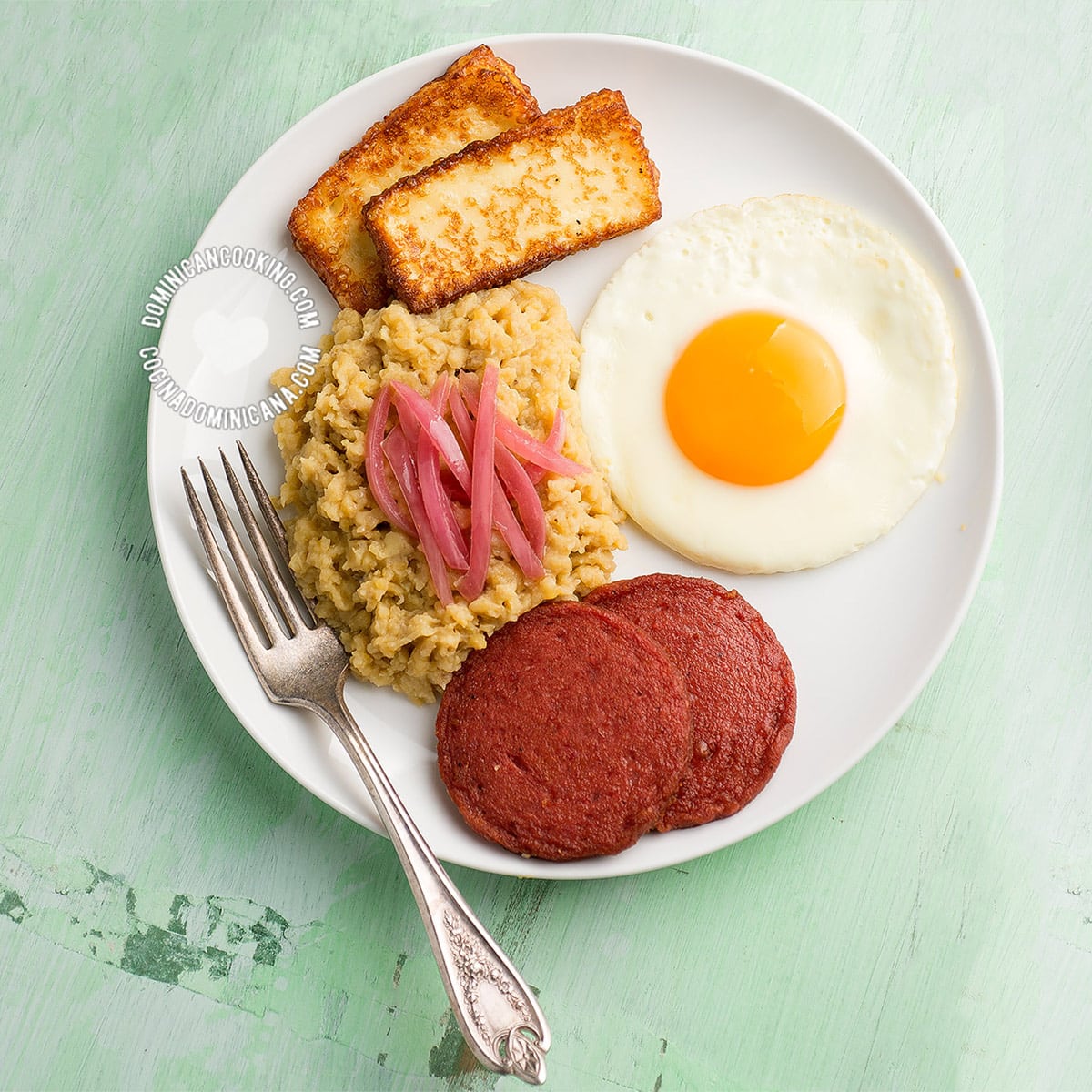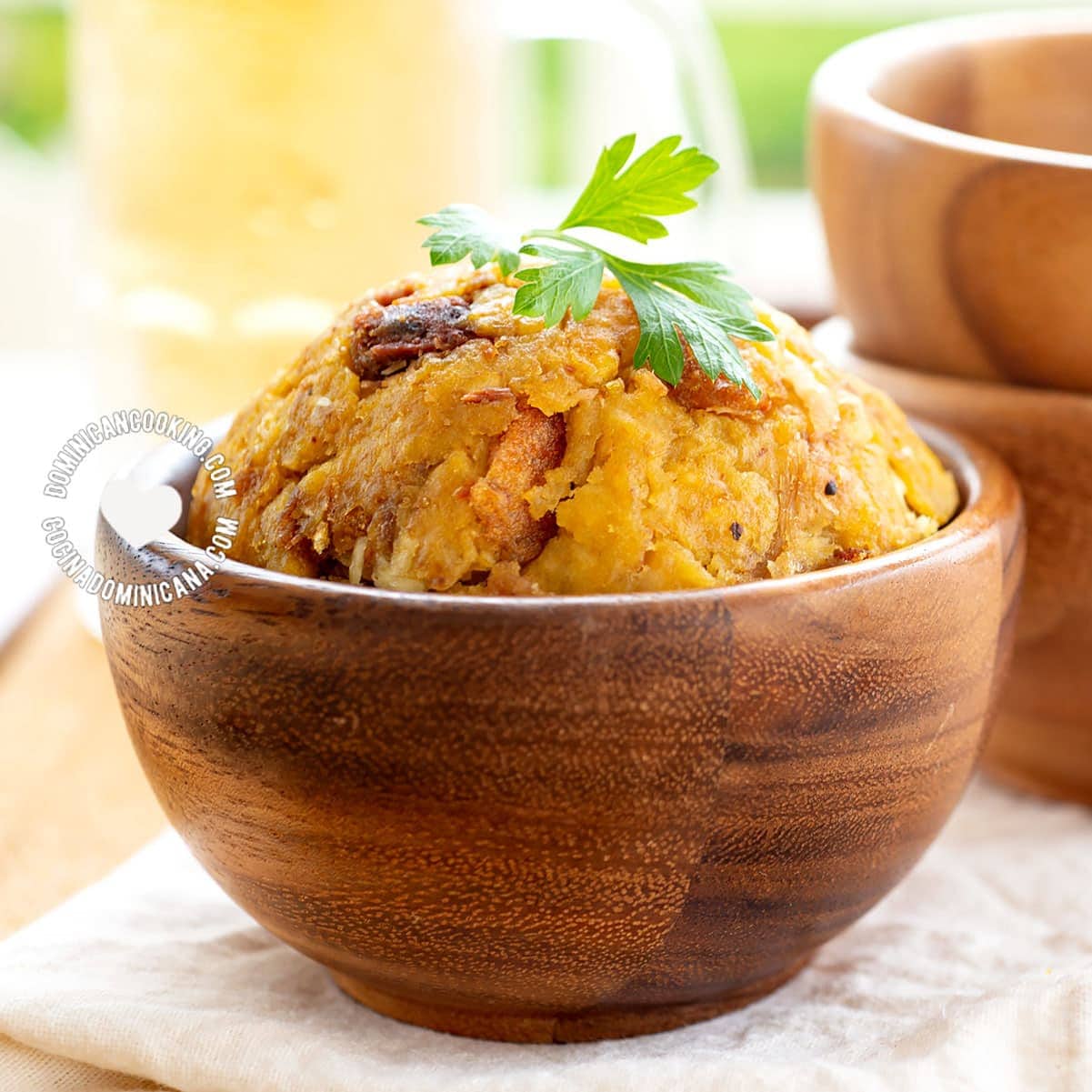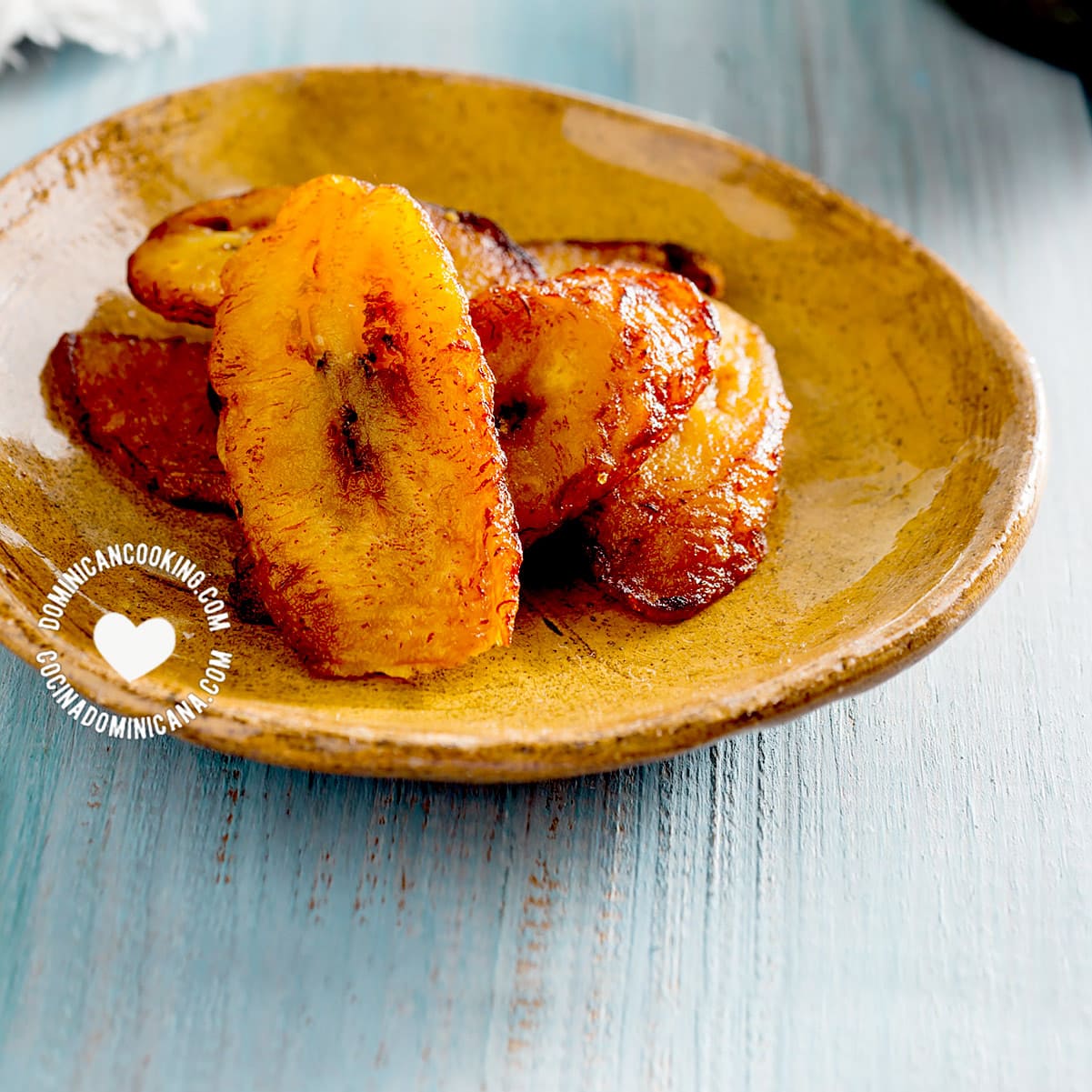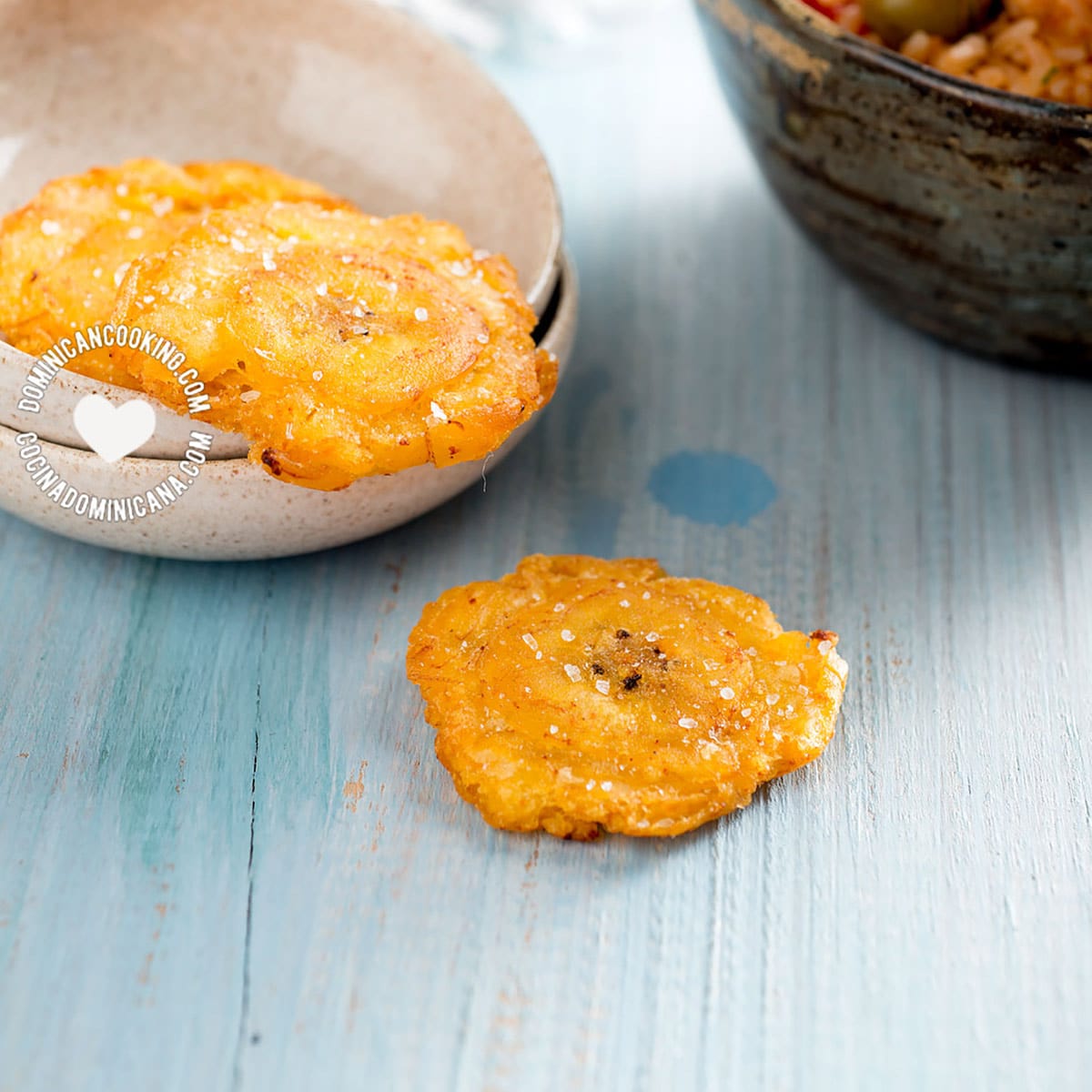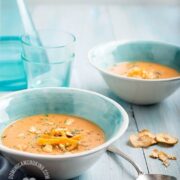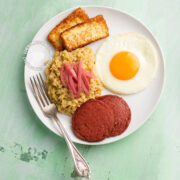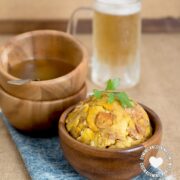Plantains, or plátanos as they’re also known, are part of the banana family. They’re eaten in many Latin American and Caribbean countries and can be cooked in many different ways. Learn about the amazing plátano and get all the great plantain recipes you can possibly want.
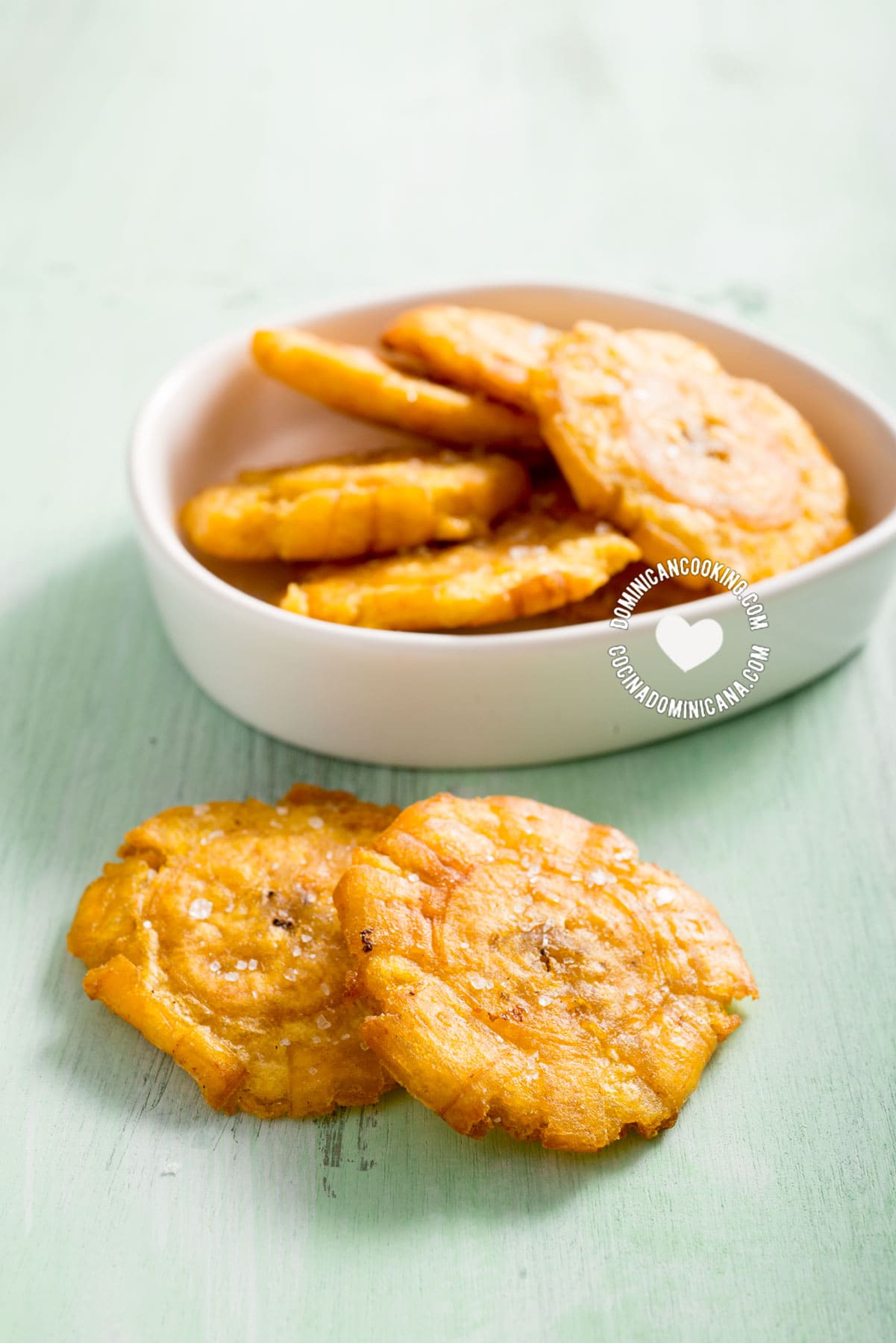
Culinary-wise, the world – according to some – is divided between Potato World and Tomato World. "Nonsense!", say I: I'd like to add the Plantain World to that mix. Because for some of us, Dominicans firmly included, plantains are life. So much so, that Dominicans have taken the awesome plantain to be our flag of national pride.
#Plantainpower, is a thing.
Plantain recipes
There are SO many ways to cook plantains, something we Dominicans are experts at, but some of these recipes are popular and well-known all over Latin America.
To make your life easier, I'll start by dividing them into unripe, or green plantain recipes and yellow or ripe plantain recipes. All of these are staples in our cuisine.
Plantains are almost always used in savory dishes, but you'll be surprised there's a plantain-based dessert too.
Green plantain recipes
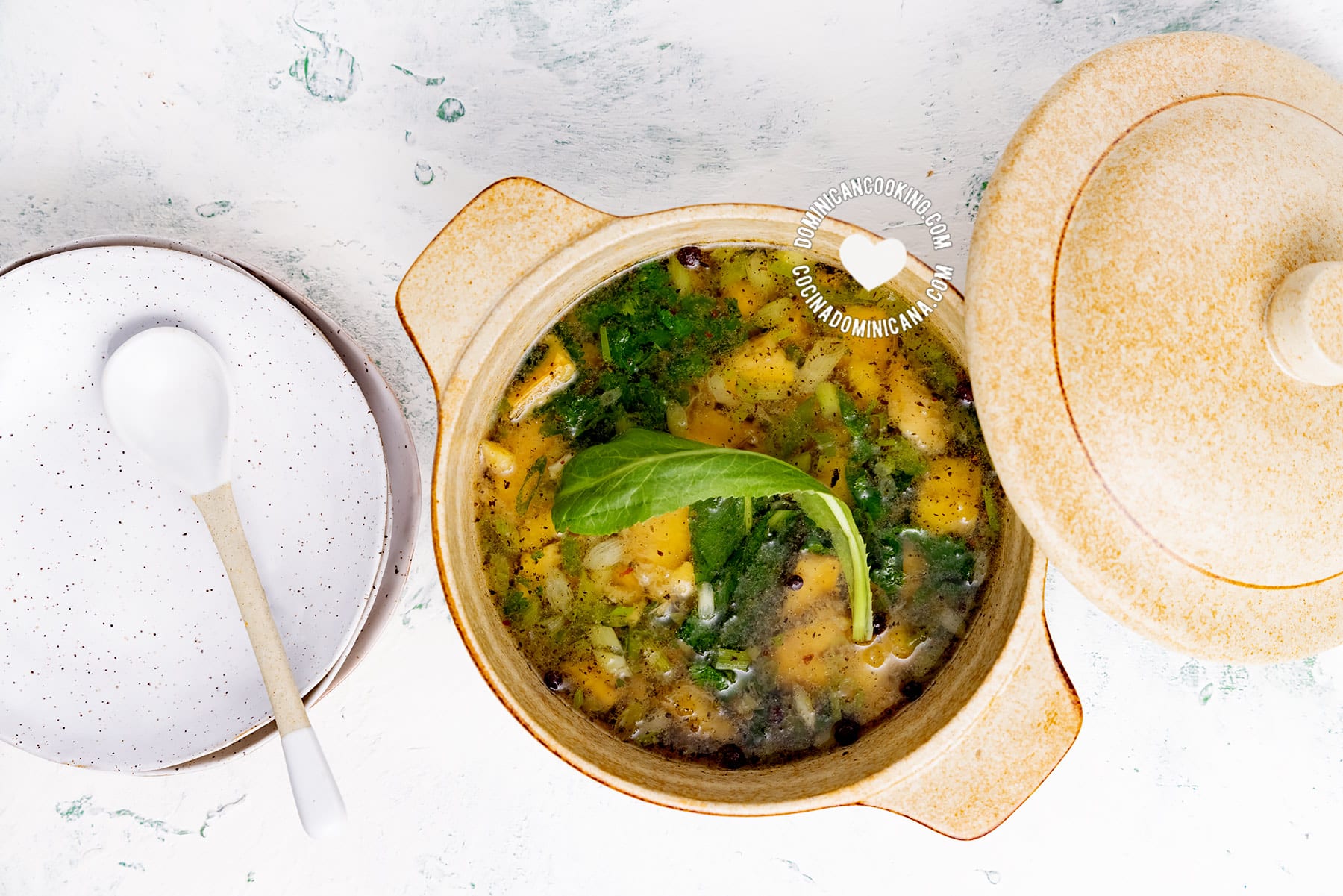
Where do I even start? Mangú, perhaps, the iconic Dominican breakfast dish served with salami, fried cheese, and eggs? Or how about tostones with a sprinkle of salt, the most amazing crispy fried plantain chips in the world? Mofongo, you say, the garlicky plantain and fried pork skins dish bathed in a savory broth? Or how about tostones rellenos, the world's best appetizer (according to me)?
Yellow plantain recipes
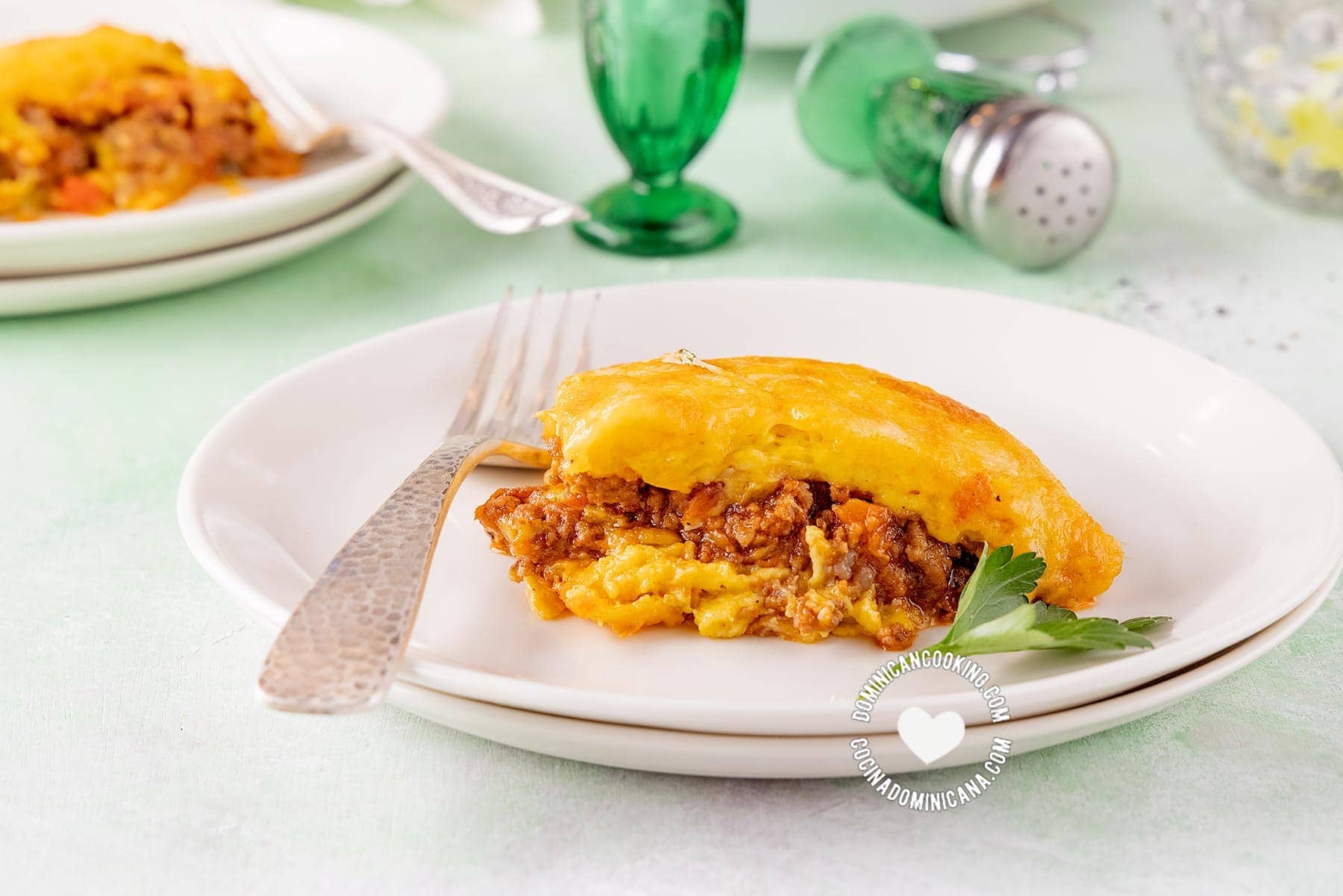
Yellow plantain dishes are staple foods of our culinary repertoire, and it is almost impossible for some of us to choose what kind of plantains we prefer. It's like choosing a favorite child. Who can resist La Bandera (rice, beans and meat, Dominican-style) with some fritos maduros (fried yellow plantains) on the side, or a pastelón de plátano maduro, our amazing Dominican-style shepherd's pie with plantains instead of potato, or – dear Lawd! – some plátanos al caldero, our spiced, caramelized yellow plantains. I am making myself hungry here!
What are plantains?
Plantains are the fruit of the plantain plant, and – along with bananas – are members of the genus Musa. In appearance, plantains look like larger bananas. Plantains are eaten ripe and unripe.
The taste of plantain is hard to describe, but the closest to the taste of unripe plantain is unripe banana, which – if you've never tried plantains – you’re probably also unfamiliar with. Ripe plantain tastes like a much starchier banana.
The difference between ripe and unripe plantain shows in their color, flavor, and texture: Unripe plantains are green and very firm, whereas ripe plantains are yellow – with black spots as it gets riper –and also mushier and sweeter. Neither should be eaten raw (though eating raw ripe plantain is not harmful, just not tasty).
You’ll know a plantain is ripe when the skin is completely yellow, and it has softer flesh
Picture of plantains
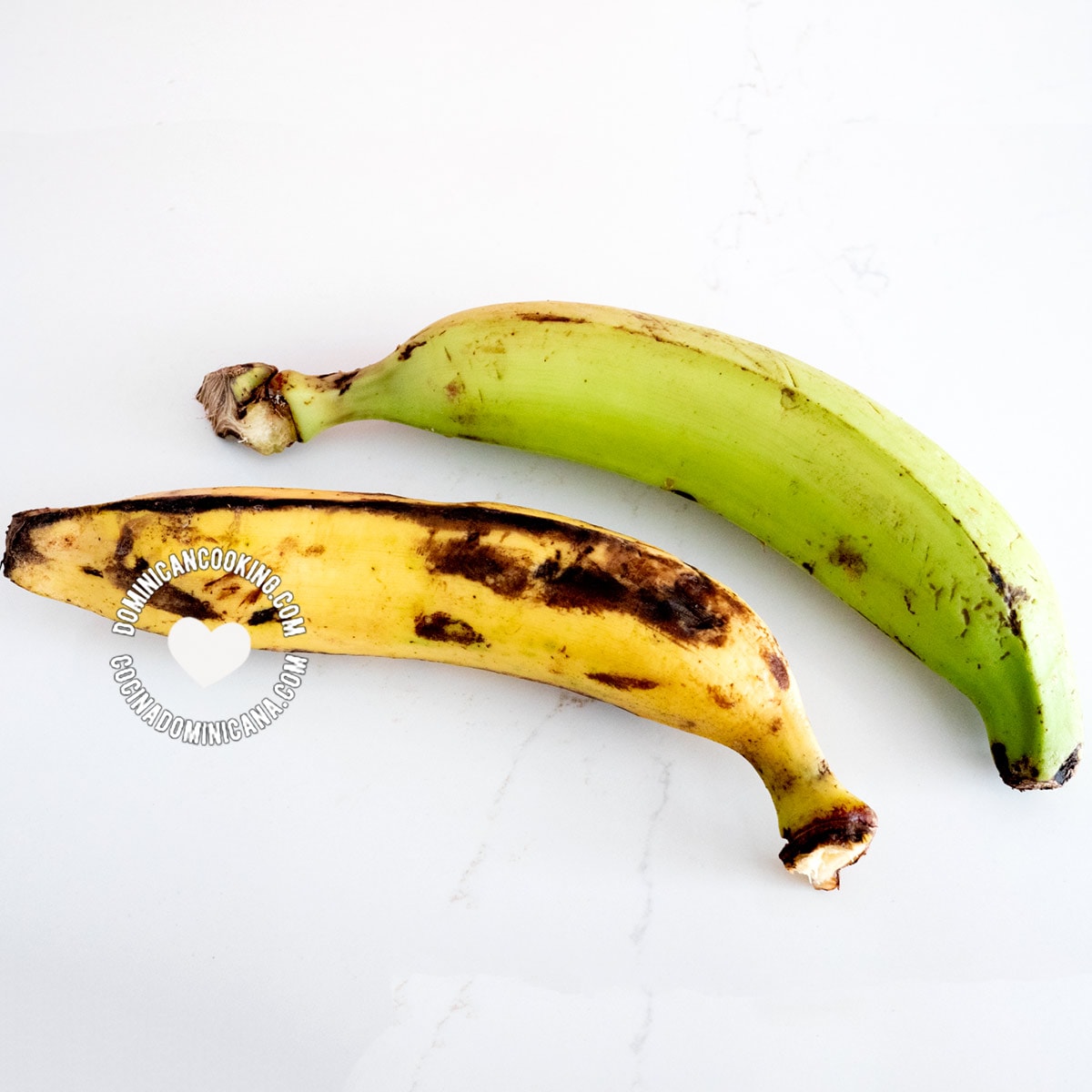
Names for plantain
Plantains are eaten ripe and unripe. Unripe (or green) plantains are known in Spanish as "plátano verde", and in some places "plátano macho" or "cooking bananas".
"Plátanos maduros" "plátano dulce" and "plátanos amarillos" are the most common names for ripe plantains in Spanish.
How to store plantains
Green plantains should be left at room temperature, and consumed within 48 hours, after which it starts to dry out and the peel more difficult to remove. If you need longer storage, my preferred method is to peel it and cut it depending on what I'll use them for (smaller slices for tostones, larger slices for mangú, for example), and freeze them in batches in a zipper bag after extracting as much of the air as possible. Vacuum sealing them is even better.
The method of storing yellow plantain will depend on what you'll use them for, some recipes, like pastelón, require a more firm yellow plantain, while "al caldero" requires very ripe plantains (with partially blackened peel). If you wish to halt the ripening process, store up to 3 days in the fridge. For longer periods you can freeze it, although I have found that the taste and texture may be affected by freezing.
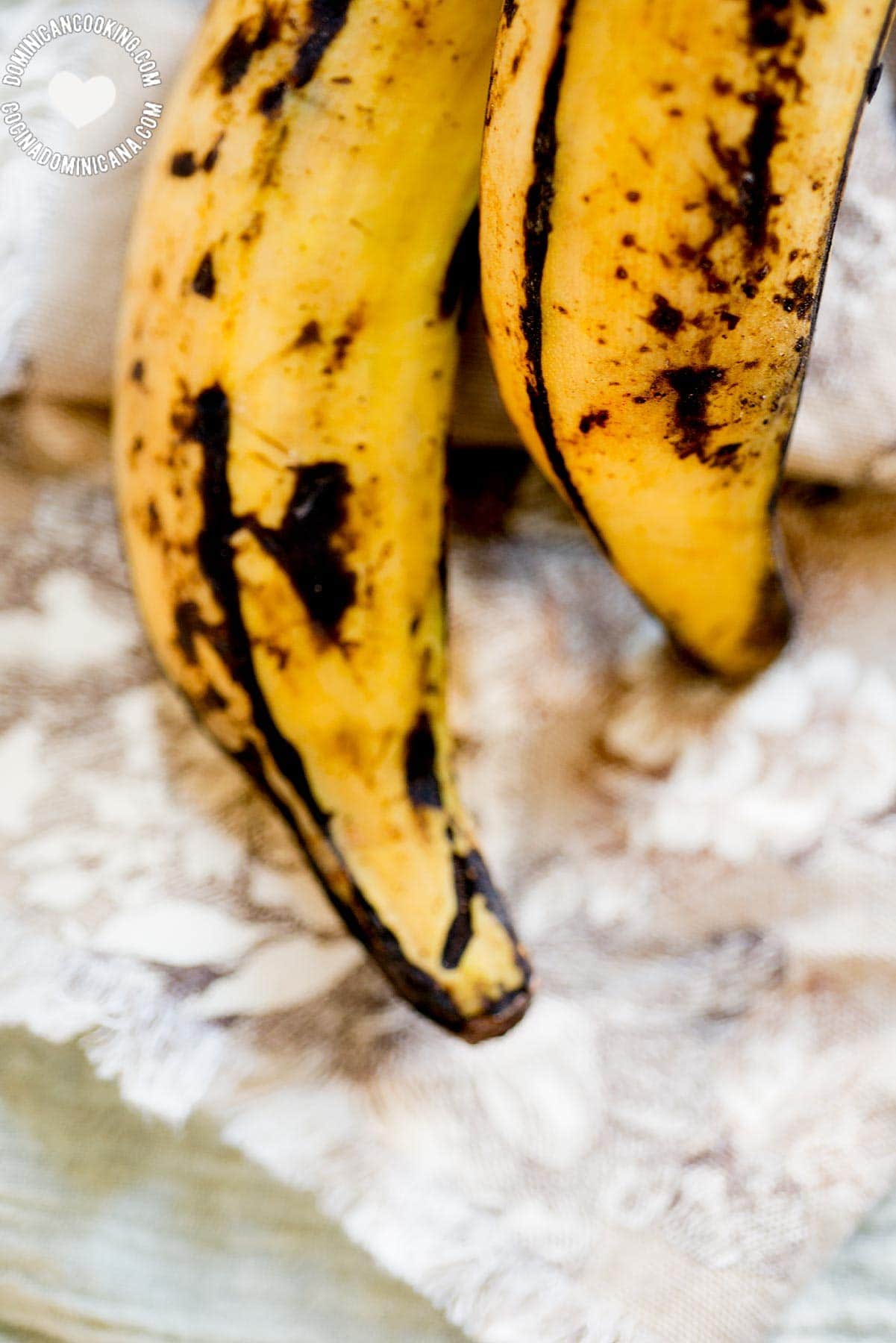
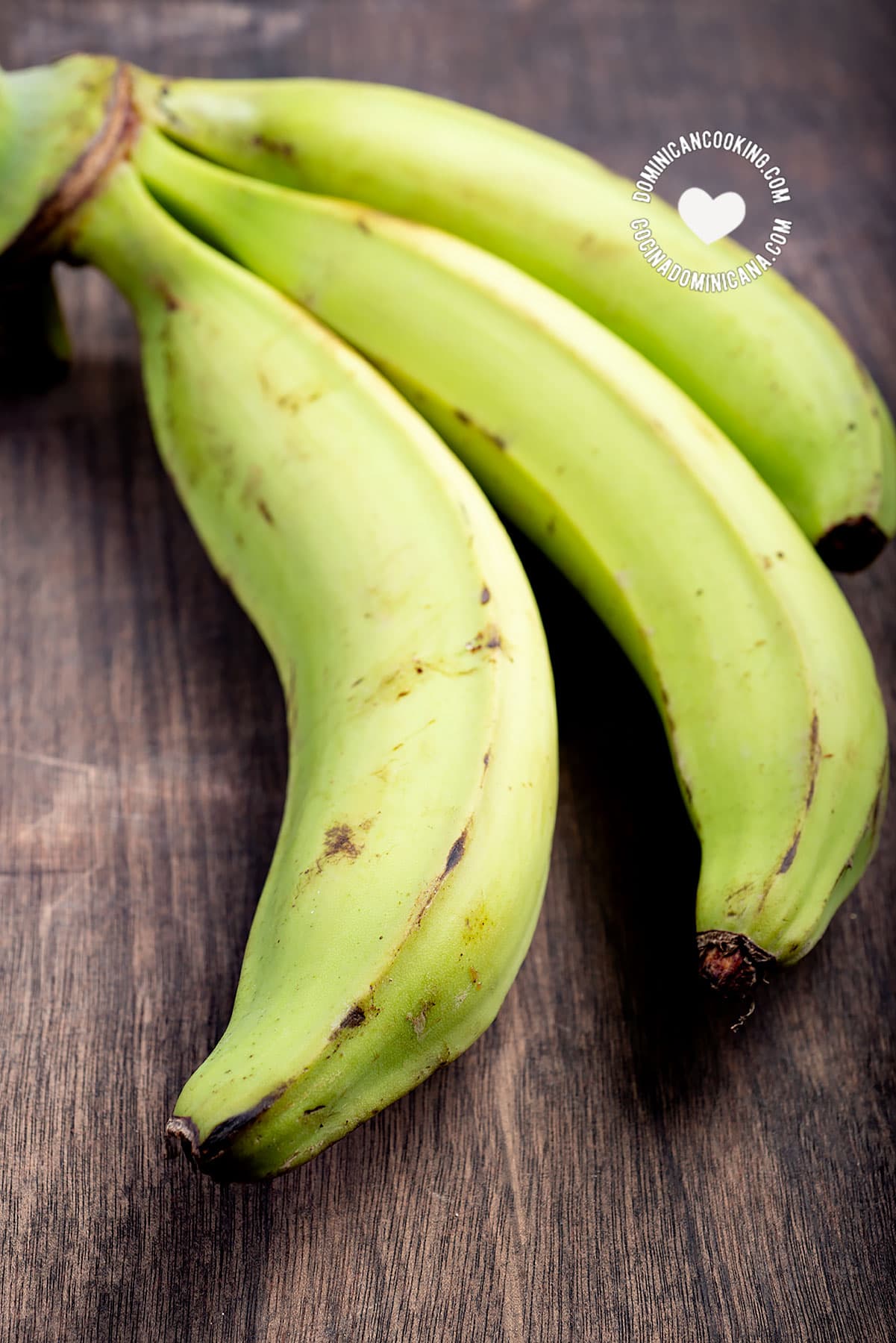
How to cook plantains
Plantains are versatile and can be cooked in many ways, depending on their stage of ripeness, but most commonly they are boiled, fried, roasted, or added to stews. Sweet plantains (ripe) can even be made into a dessert we call mala rabia.
The leaves are used in our cuisine to wrap pasteles en hoja and panecicos.
How to peel
Peeling an unripe plantain is entirely different from peeling a banana – or a ripe plantain, for that matter. The peel is scored and removed in sections. Lucky for you, we’ve written an entire guide on how to peel and slice plantains, complete with a handy video
How to boil
One of the most common ways to eat plantains is boiled. Plantains are peeled and boiled in salted water. You can follow along with our Los Tres Golpes (plantain mash with sauteed onions, Dominican salami, fried cheese, and eggs) recipe for the world's best plantain recipe. I may be a bit biased.
How to fry
In its most basic form, plantains are peeled, and deep-fried, but different recipes will call for different sized pieces, and frying time. Check our recipe for tostones (the world's best side dish or snack), or mofongo with shrimp, for just two examples of what can be made with fried plantains.
How to roast
To roast plantains the traditional way, they were roasted under a bed of hot ashes, which cooked it over very low heat for a long time. Not having hot ashes at hand, we have can cook them in the oven, as is the case in our recipe for traditional Dominican mofongo, aguají (plantain soup), and ripe baked plantains.
Nutritional benefits of plantains
Plantains are very low in fat and sodium, are cholesterol-free, and are a very rich source of fiber. One-half cup of cooked slices contains about 89 calories.
Plantains are an excellent source of vitamin C and A, having 20 times the vitamin A, three times the vitamin C, twice the magnesium, and almost two times the potassium in a banana.
Plantains are also very rich in carbohydrates, and as such are not recommended for the keto or low carb diet. However, we have a recipe for a keto “mangú”, if you miss it. Read the post carefully to understand how it works.
Where are plantains from?
Plantains and bananas come from Southeast Asia and flourish in tropical areas. Alexander the Great is credited with bringing plantains westward from India to Greece. From there it spread to the Middle East and East Africa thanks to Arab sailors.
Portuguese conquistadors brought it to the new world, where – thanks to enslaved Africans who were familiar with this fruit – plantains became popular mostly in the Caribbean, Central America, and South America.
If you have any questions, feel free to leave it in the comments.



